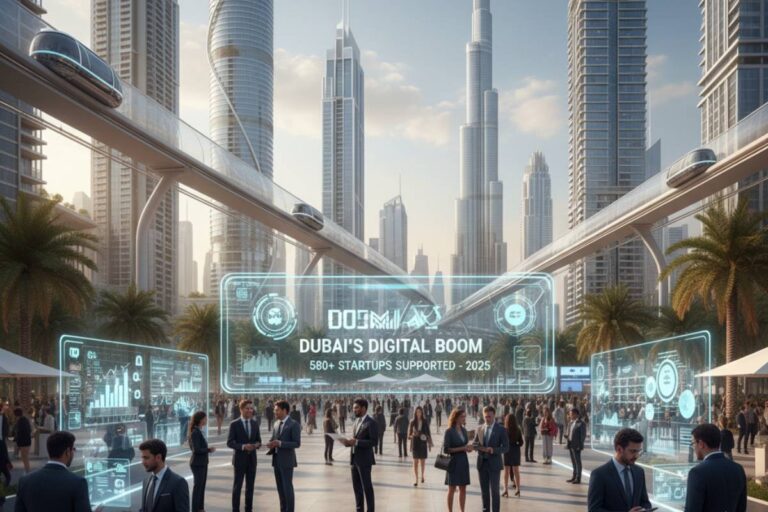The world’s real estate market is at a very important point right now. As markets recover from recent volatility and new technologies change how things are done, industry leaders are seeing changes that have never happened before. These changes will shape property investment and development for years to come.
The Transparency Revolution Boosts People’s Trust in the Market
ESG Compliance Is Now the Norm in the Market
The need for openness in real estate has gone from being a competitive edge to being a must. Investors around the world now make decisions based on environmental, social, and governance (ESG) factors. Properties with strong ESG credentials consistently do better than their traditional counterparts.
Corporate stakeholders are putting net-zero goals at the top of their lists and looking for rules to help them figure out how much environmental damage and risk they cause. Buildings with strong ESG frameworks have better financial metrics, such as:
- Higher rental yields
- Higher occupancy rates
- Better long-term asset performance
Digital Infrastructure Makes Things Clearer and Faster
India is a good example of this change; it moved up five spots in JLL’s Global Real Estate Transparency Index to get a “transparent” score. The Digital India program built a complete digital infrastructure that:
- Let’s people get government services online
- Cuts down on corruption
- Helps the economy grow
Advanced technical architecture lets governments share more accurate, higher-quality information. This is especially important now that climate-risk disclosure rules are becoming more standardized. Singapore and other top markets show how going digital can speed up progress toward transparency, which builds investor trust and draws in money from around the world.
Transparency Solutions That Use Technology
Artificial intelligence, blockchain, and the Internet of Things are all examples of PropTech that make things more open. These new ideas make it easier to manage data and make property transactions more open. Blockchain technology:
- Makes property records that can’t be changed
- Automates the process of making documents and payments through smart contracts
- Cuts down on fraud and speeds up closings
Changes in Capital Flow Patterns Change How People Invest
North American Markets Draw Attention to the Homefront
There is a big change happening in how people invest around the world. Almost 80% of North American limited partners now invest in real estate in their own country, up from 69% in earlier research. This is a strategic shift toward regional stability in the face of global political and economic unrest.
In the second half of 2024, cross-regional capital flows to North America, Europe, and Asia-Pacific rose by 31% year over year to $37 billion. This was the highest half-year total since 2022, which shows that the market is recovering strongly. The industrial and logistics sectors drew in the most cross-regional investment, taking a record 47% of the total.
European Markets Are Strong
In the second quarter of 2024, European real estate investments rose by 18% from the first quarter. The UK and Germany remained popular places to invest. The European Central Bank’s rate cuts in June and September were a big change from its previous tightening policies. This made people more optimistic about the market and led to more transactions.
Prime office locations around the world do well because there aren’t many empty spaces, and there is a lot of demand. The focus has moved to investments in prime locations with better amenities to:
- Make employees happier
- Get them to come to work more often
The Asia-Pacific Region is Getting Stronger
In the second half of 2024, cross-regional inflows to Asia-Pacific grew by 221% year-over-year to $6.3 billion. Investors from North America were especially busy in Australia and Japan, where they made big deals in the:
- Hotel sector
- Office sector
- Logistics sector
- Industrial sector
Strategic Development Approaches Change Markets
Growth Comes from Other Types of Assets
Real estate investment trusts have raised their share of alternatives from 26% in 2000 to more than 50% in 2024. This trend toward different types of properties shows that investors are looking for higher returns in a market that is hard to work in.
Digital economy properties, such as data centers and telecommunications, were the second-best type of asset to invest in until 2025. Active managers also move a lot of money around in the healthcare sector.
How Technology Integration Changes Development
Now, strategic planning in real estate needs to include both market intelligence and cutting-edge technology. Developers need to use proptech innovations while looking at changes in:
- Supply and demand
- Demographics
- Economic indicators
Effective development strategies include a thorough analysis of the market, clear business models, setting clear goals, and structured operational planning. Financial planning and capital allocation make sure that a project can go ahead, while good portfolio and asset management keep it profitable.
Balancing Risk and Opportunity
Development strategies are ways to manage project risks while also making the most of project opportunities. Real option theory offers novel methodologies for assessing the value of flexibility in contrast to guaranteeing specific outcomes during the development process.
Companies need to decide if projects fit into their portfolios at the time of making an investment decision. They do this by using both:
- Development strategy-specific criteria
- Standard profit metrics
Signs of a Market Recovery and What to Expect in the Future
A Change in Positive Sentiment
More than 68% of people around the world think that the fundamentals of commercial real estate will get better in 2025. This includes things like:
- The cost of capital
- The availability of capital
- Property prices
- Transaction activity
- Leasing activity
- Rental growth
- Vacancies
This is a big change from last year’s survey, which found that only 27% thought things would get better.
Expectations for the cost of capital and the availability of capital caused the biggest changes in sentiment. Almost 68% of people who answered think that getting a loan will be easier, and 69% think that getting a loan will be cheaper.
Differences in Performance by Sector
People from all over the world seem most hopeful about the leasing conditions for residential properties, such as:
- Single-family homes that are built to rent
- Student housing
- Senior housing
The capital markets also look good for the industrial, hotel/lodging, and alternative sectors.
On the other hand, expectations for the office sector are still low because people expect:
- Fewer transactions
- More vacancies
- Higher borrowing costs
Problems and Problems with Implementation
The Difficulties of ESG Reporting
Real estate companies have a lot of problems with ESG reporting. For example, they have to collect a lot of data on:
- Energy use
- Carbon emissions
- Waste management
- Tenant engagement across many properties
Because there aren’t any standard frameworks, it’s hard to meet the expectations of different investors and regulators.
Many companies that don’t have the skills to do ESG reporting in-house have trouble because it costs a lot and takes a lot of time to set up. Companies have a hard time comparing their ESG performance to industry standards without accurate benchmarking, which could mean they miss chances to make things better.
Problems with Adopting New Technology
Blockchain and PropTech solutions have many benefits, but putting them into action requires a lot of money to be spent on:
- New systems
- Training for employees
Most companies would rather work with PropTech providers to test out blockchain features before adding their own custom integrations.
When new technologies are added, they must find a balance between being innovative and useful. This means that the costs of implementing them must be worth the benefits of:
- Increased productivity
- Better transparency
- Lower costs
How the Market Works in Different Regions
The UAE is the Most Open Country
The UAE has made a lot of progress in making global real estate markets more open, with Dubai and Abu Dhabi being two of the best places in the world to do business. Countries that put clear rules, sustainability metrics, and data-driven insights first are slowly getting more global capital.
Changes in the Indian Market
India became the best country in the world at improving transparency because it focused on digitalization and institutionalization. Leading Indian cities moved up to the transparent tier thanks to:
- Proactive financial regulation
- New rules for disclosing climate risks
- Simpler building codes
- Digitized land records
The residential sector is still attracting investors, especially in Europe, where fewer building permits make it harder to find housing and raise rents, making investments more appealing. The balance between rents and property prices has changed in a way that is good for investors.
New Ideas and Technologies for the Future
More and More People Are Using Blockchain
Real-world uses of blockchain show that it has real benefits. Propy is a global PropTech company that has helped with more than $4 billion in real estate deals in three U.S. states. It also completed the first blockchain property sale in Europe in Seville, Spain.
The platform lets people:
- Share data safely
- Collect rent from tenants
- Do premium due diligence without having to fill out paperwork
With online closings, buyers, sellers, agents, and escrow officers can finish deals completely online, any time of day or night.
The Evolution of PropTech Goes On
PropTech puts the customer experience first with things like:
- Virtual property tours
- Online contracts
- Easy-to-use interfaces
- Fast transactions
Data analytics give us useful information that helps us make decisions, and automated property management cuts down on the cost of manual work.
PropTech platforms improve marketing by helping you target the right audiences and match property buyers with their preferences to get the most out of your efforts.
The combination of demands for transparency, changing investment patterns, and new ideas for strategic development creates both chances and problems for real estate markets around the world. To be successful in the increasingly complex and interconnected global property market, you need to adopt:
- Clear data practices
- Flexible investment strategies
- New ways of developing properties





















